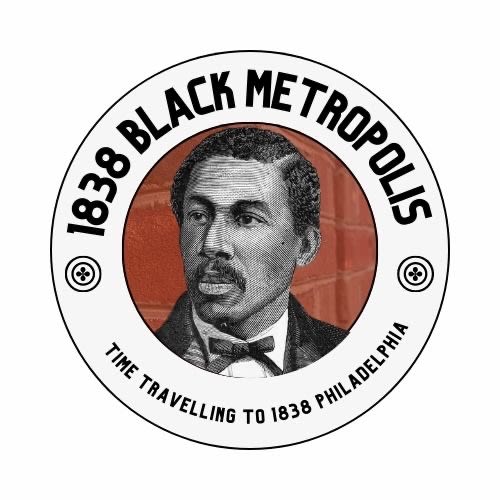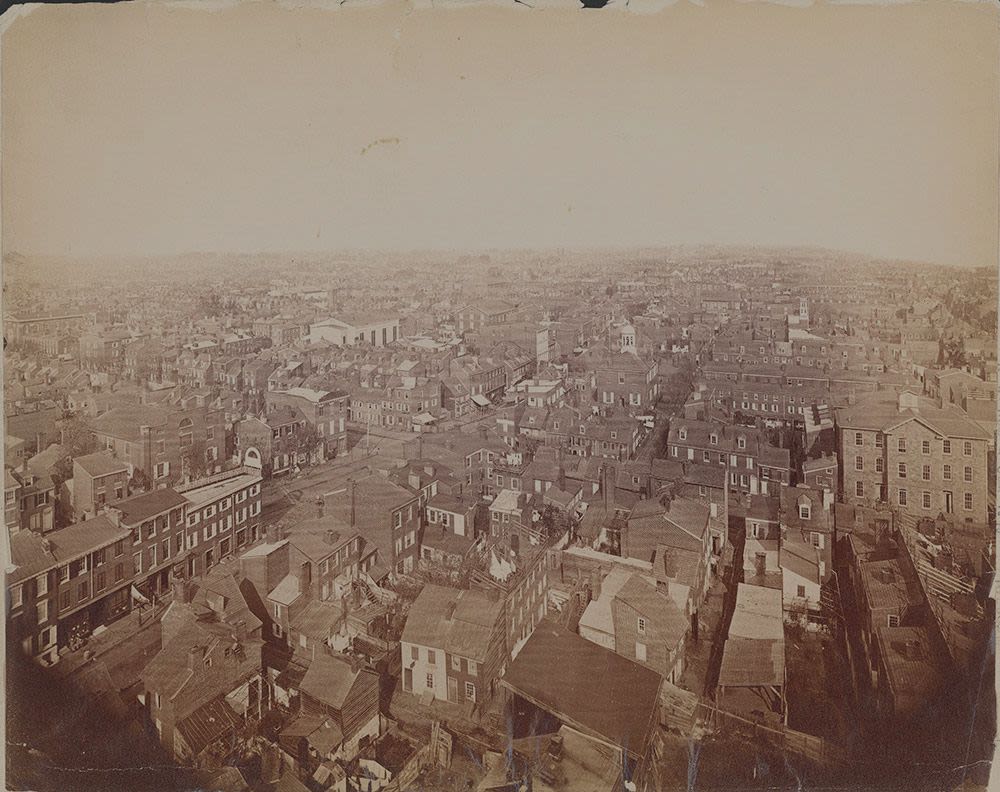
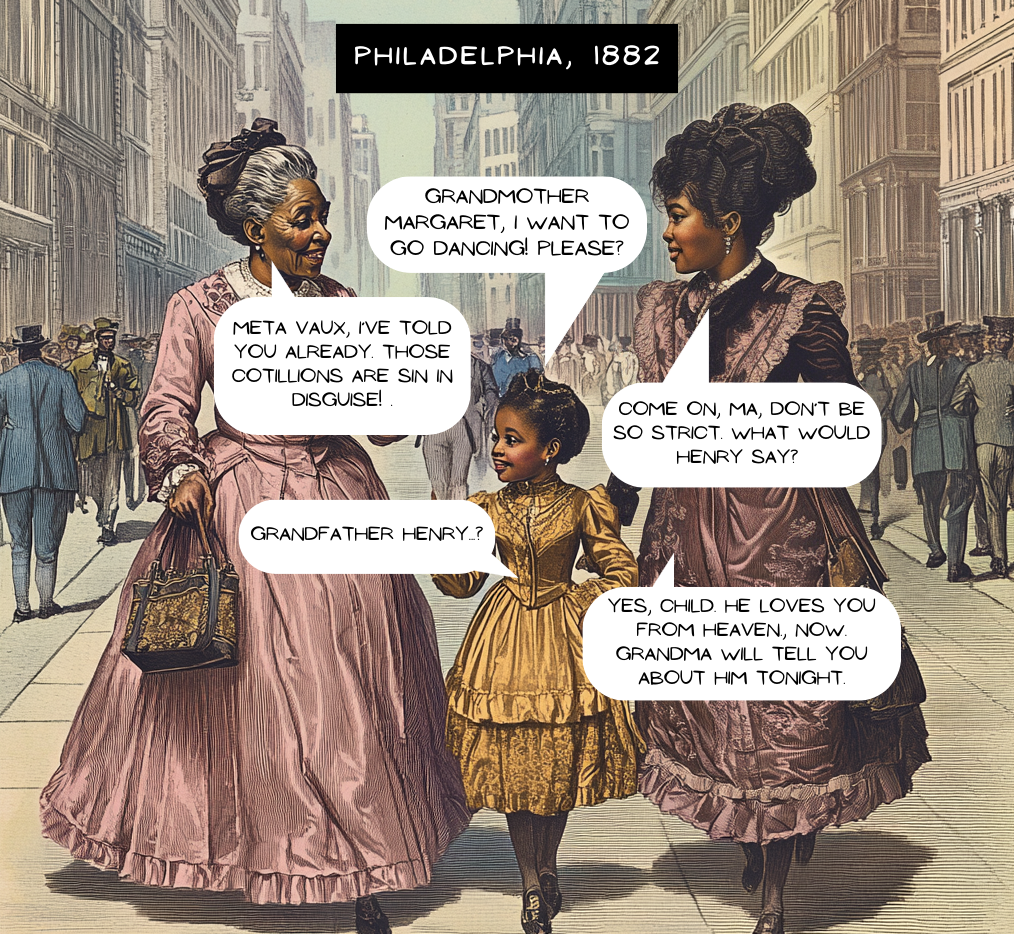
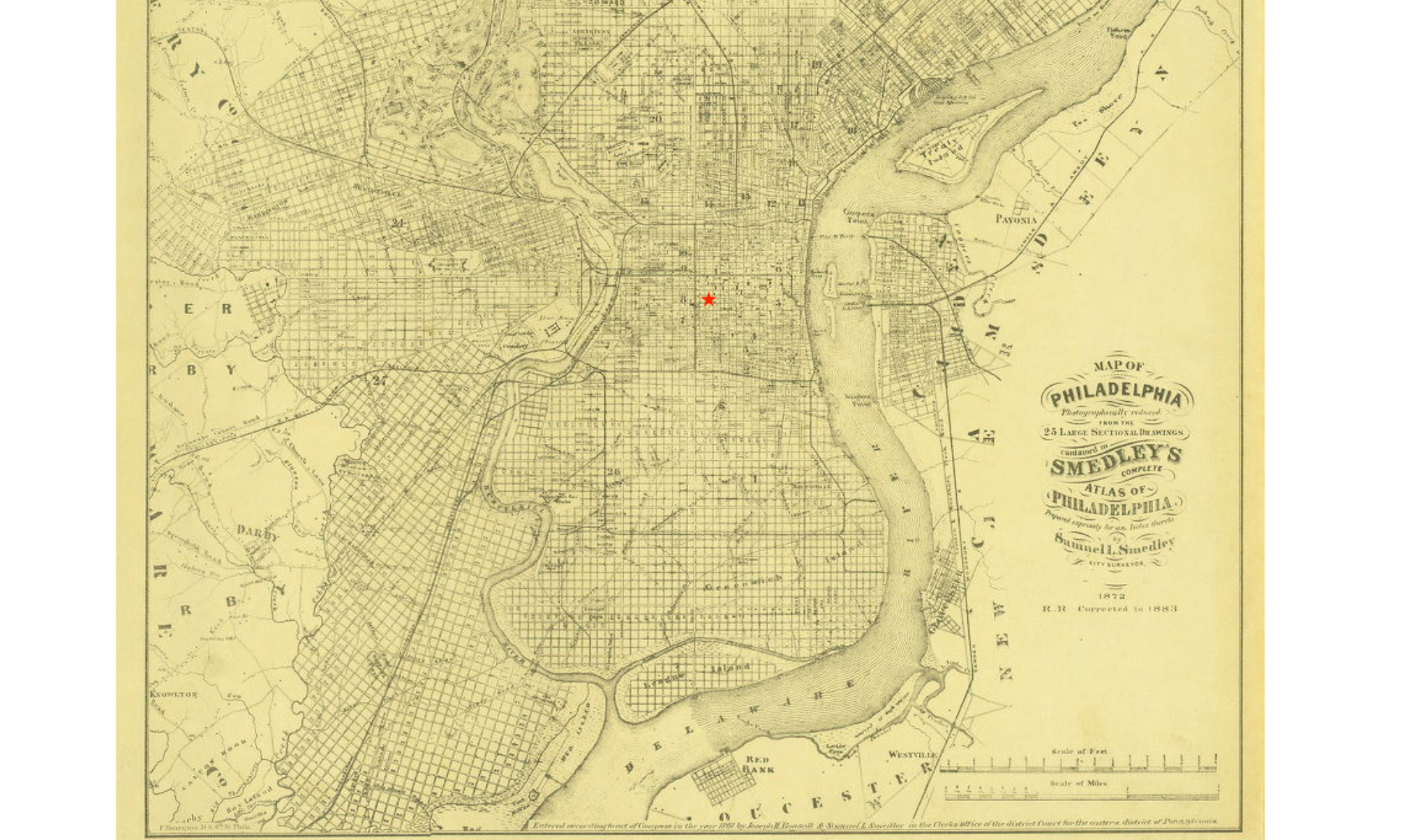
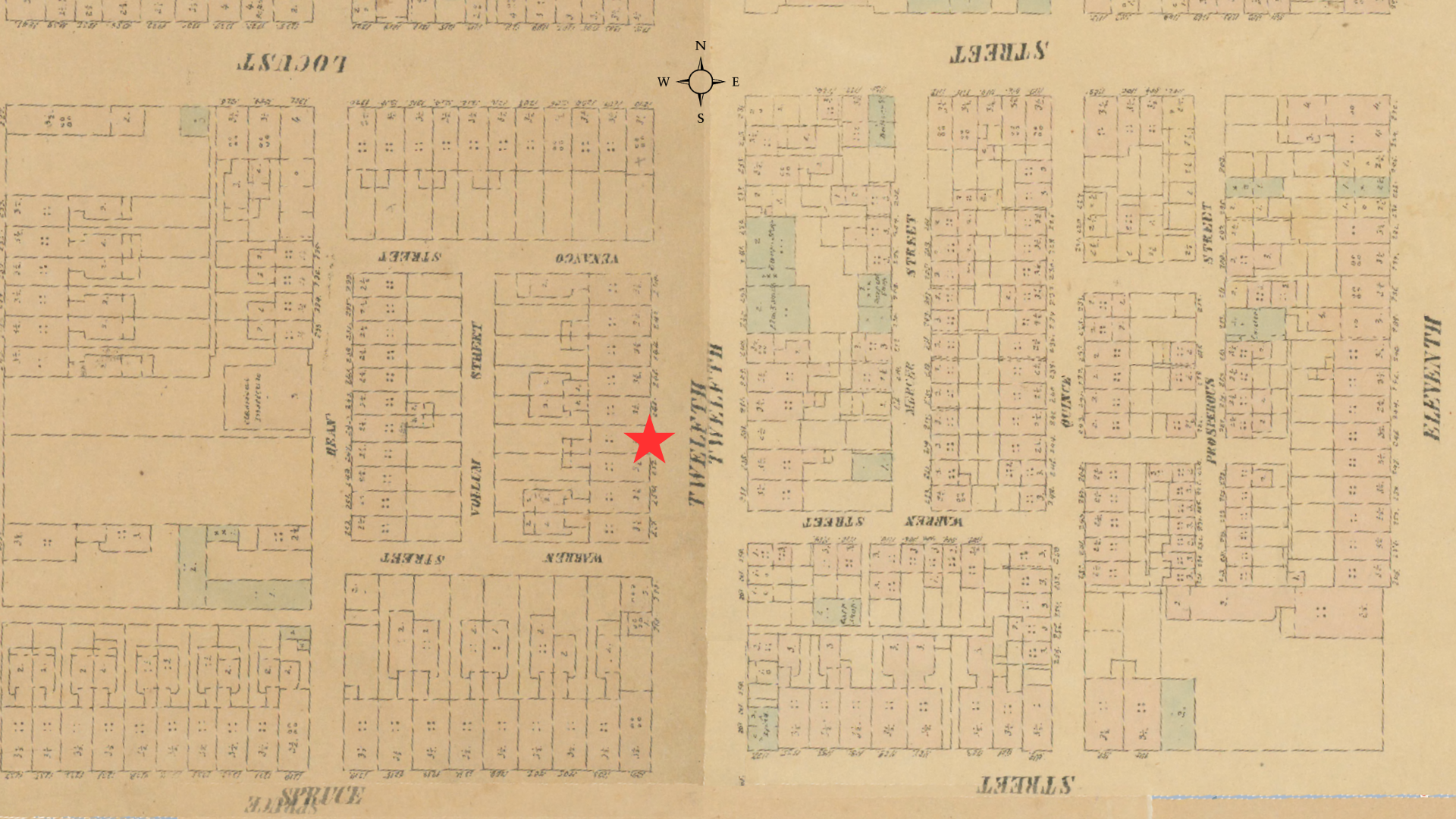

250 S 12th St, where Henry Jones lived with his family.
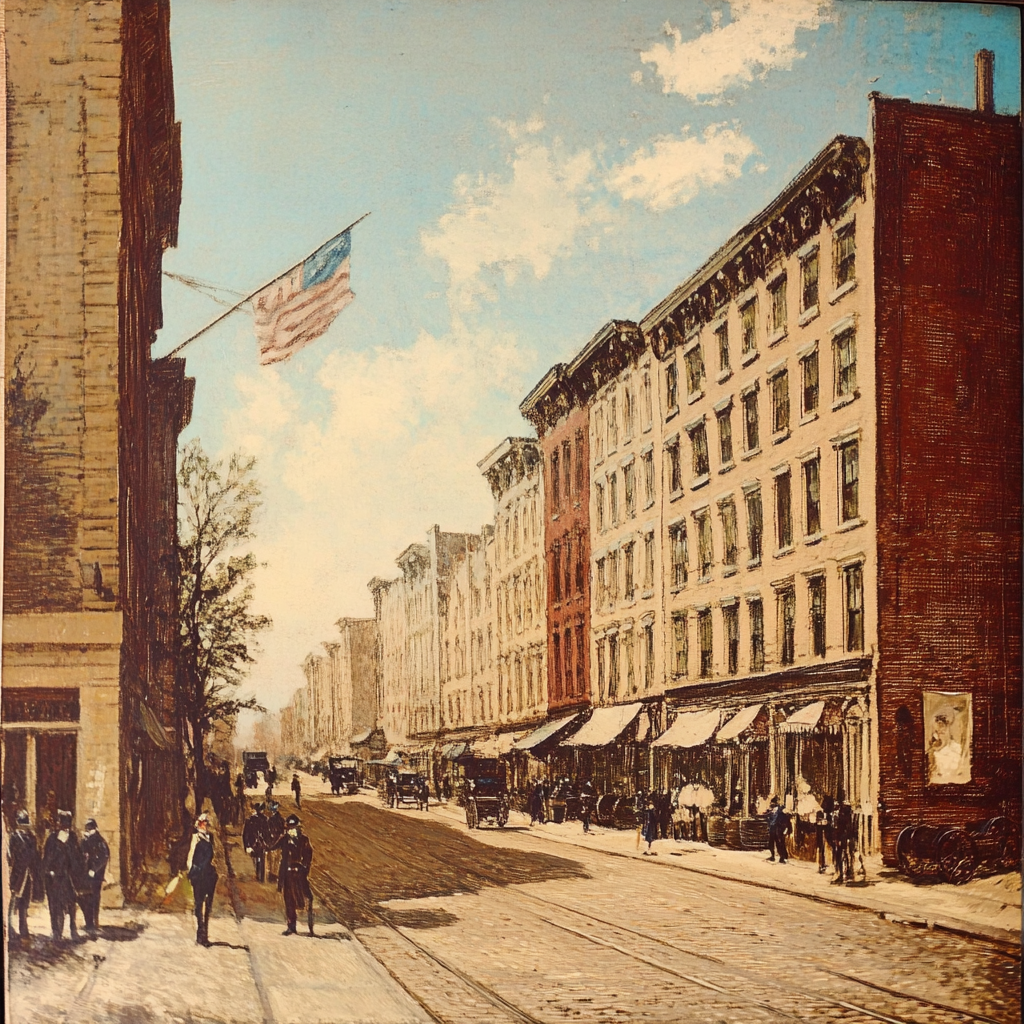
AI rendering referencing an image of Chestnut St between 11th and 12th Streets, Free Library of Philadelphia.
AI rendering referencing an image of Chestnut St between 11th and 12th Streets, Free Library of Philadelphia.
What the neighborhood might have looked like...
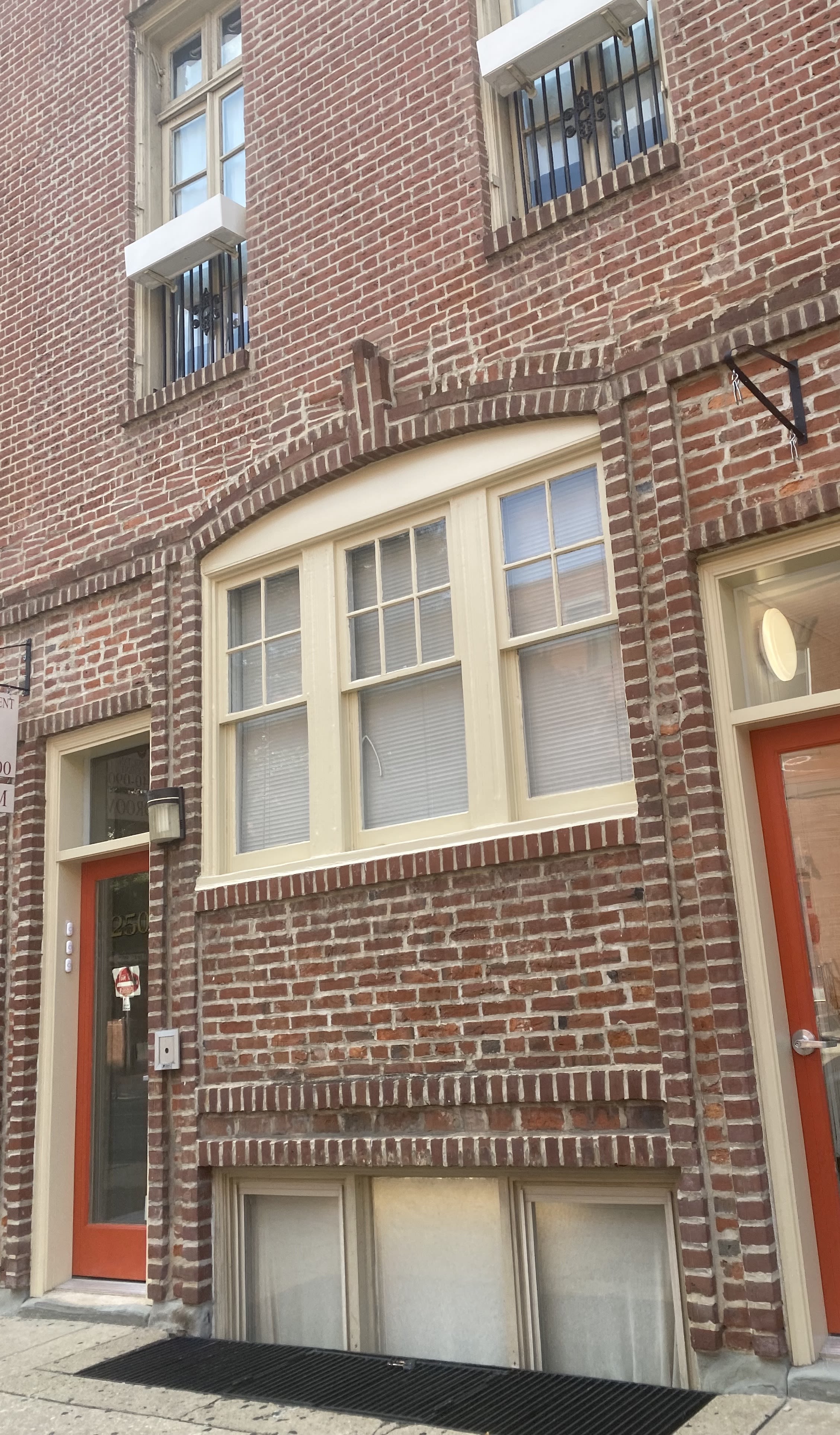
250 S 12th St in 2024
250 S 12th St in 2024
Your grandfather was born in 1811 in the West Indies. While I never knew slavery, he lived it for 20 some years.
In 1838, Henry escaped slavery in Virginia and came to Philadelphia. He was brought to Quince St, where many of us lived and could support people in distress.
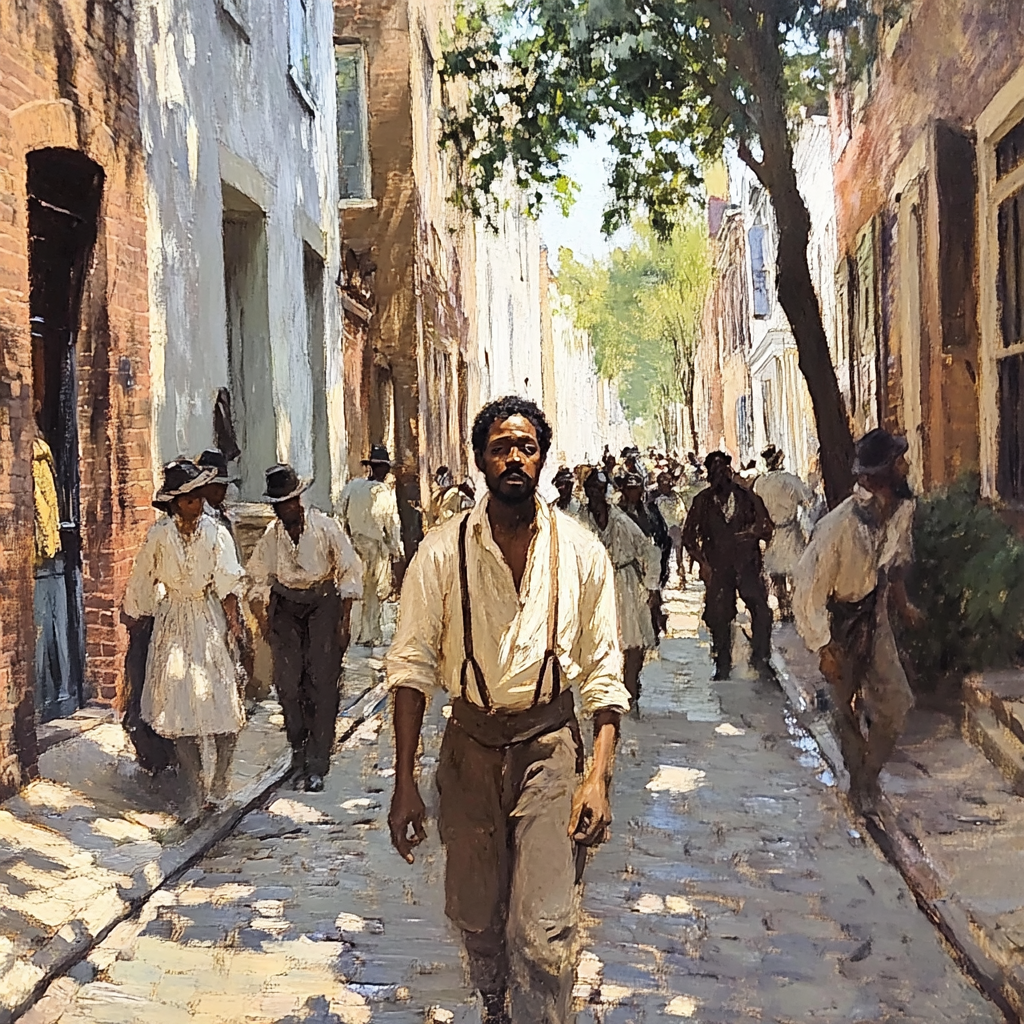
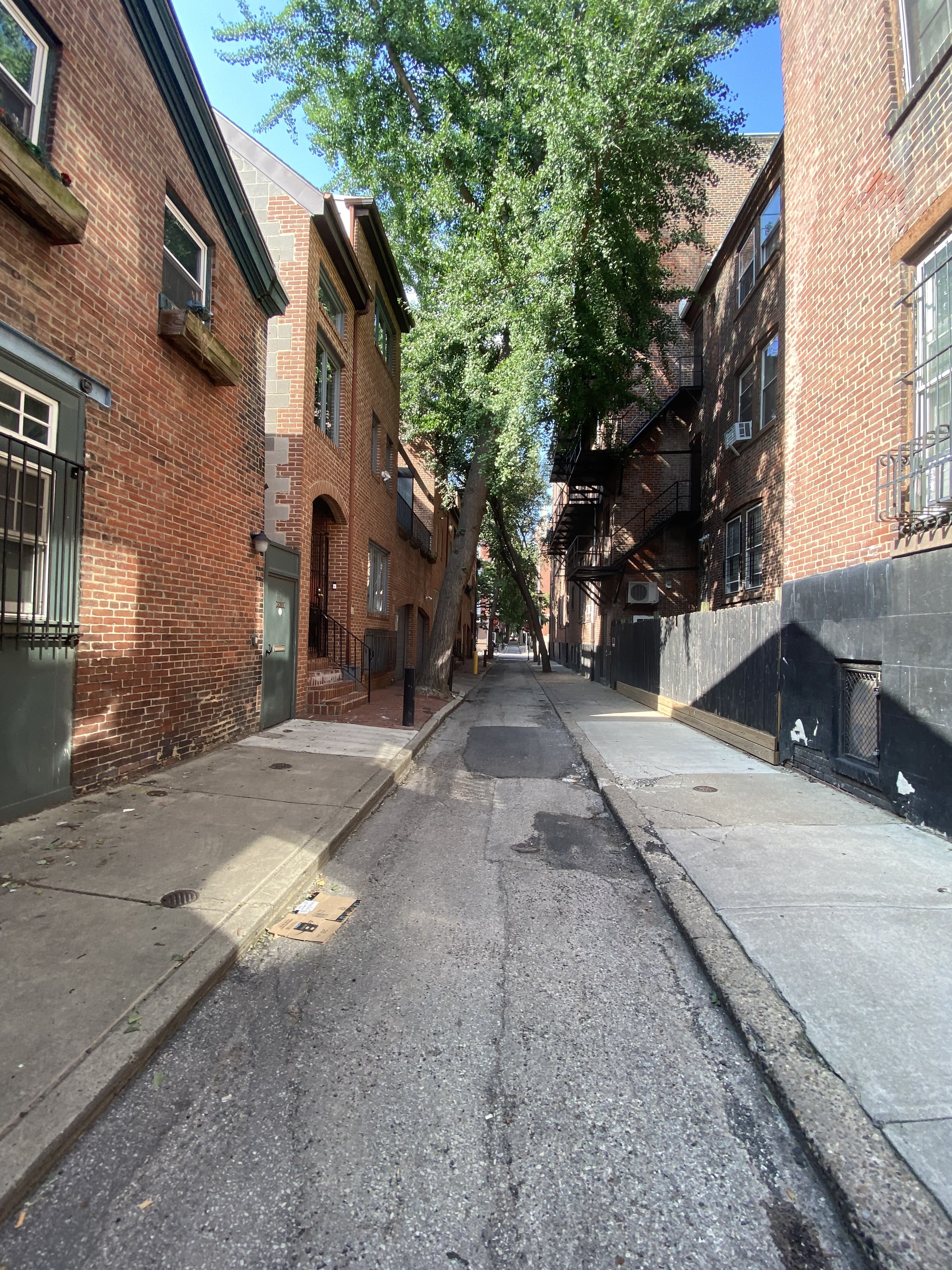
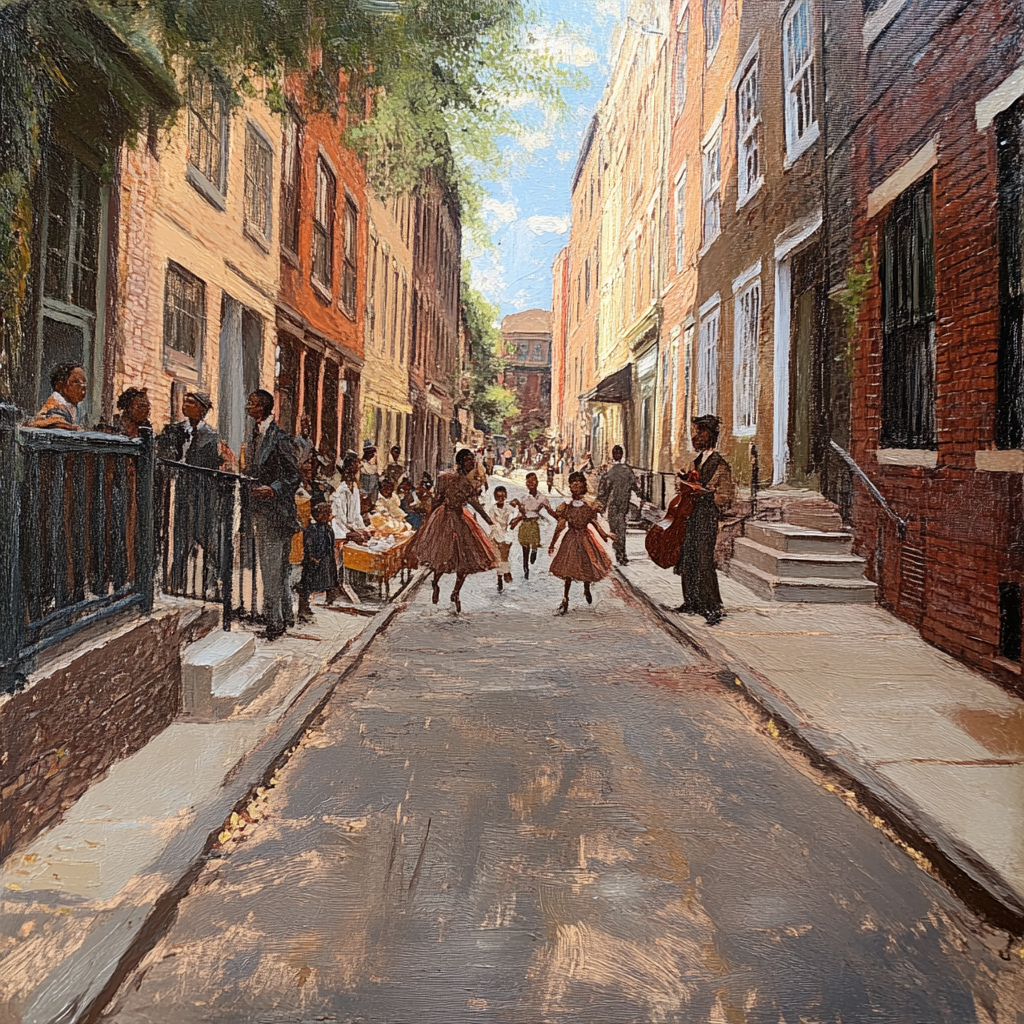
I couldn't tell you what it must have been like to experience Quince for the first time. Of course nowhere is completely safe for colored folks, but these streets were ours.
This is a map of Quince and its bordering streets.
Hagar Ballard, a friend of mine, lived at the top of the street. With her wealth, she's usually the first stop for people who need help. She gave him clothes and found him a place to stay.
Then he moved to 39 Quince.
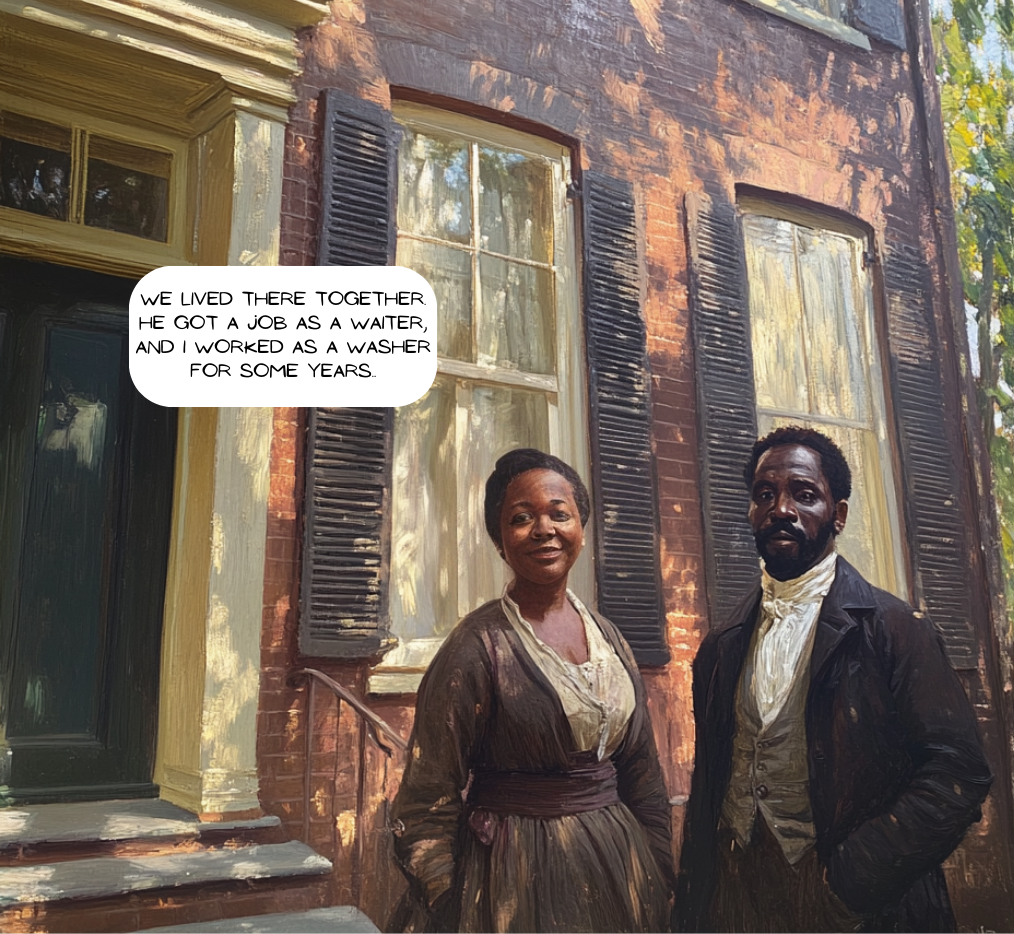
One day Charles Gardner from First African Presbyterian Church came by for his census - to protect our right to vote, remember. Nothing wrong with showing off what you've got, Meta. The way you do so can be a statement about what we deserve in this world.
Although Henry's listed as the head of the household, we all know I made the rules in that house. And rightly so! Always be true to who you are, Meta Vaux. Like your grandma and ma, you'll be your own leader.
They noted our residence, Quince above Spruce. All these folks listed here were our neighbors.
Three in our household, and three so-called "native" to the state. We couldn't yet say Henry was manumitted. His freedom was too new.
Our occupations. Henry grew as a waiter and eventually ran his own catering business. Colored people ran the caterers, the porters and the carters. We also had our own shoemakers, and dressmakers, furniture makers - everything you think of! Some of us even owned railroads, and lumber yards and coal yards.
We didn't own any homes at that point. We had $500 in personal property, which I earned by helping my father with his stables, and paid $44 in rent.
Henry and I were part of a beneficial society. Thousands of us pooled our money to help people in distress.
We spent so much time at Mother Bethel. That church was like a second home to us.

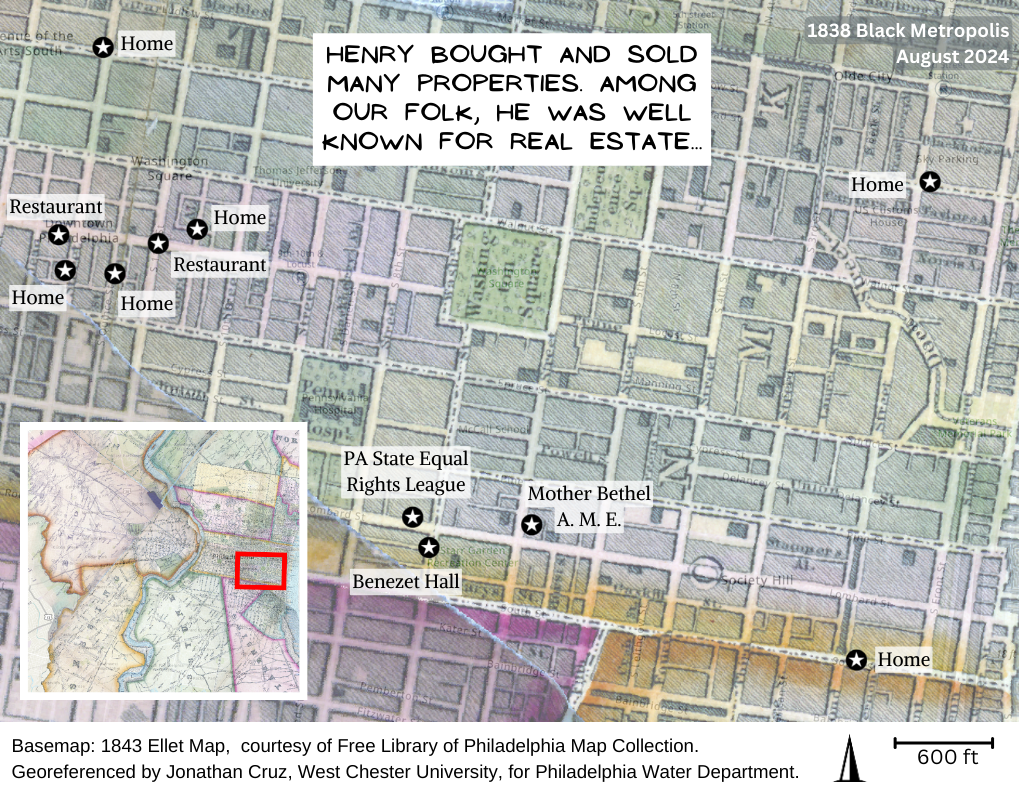
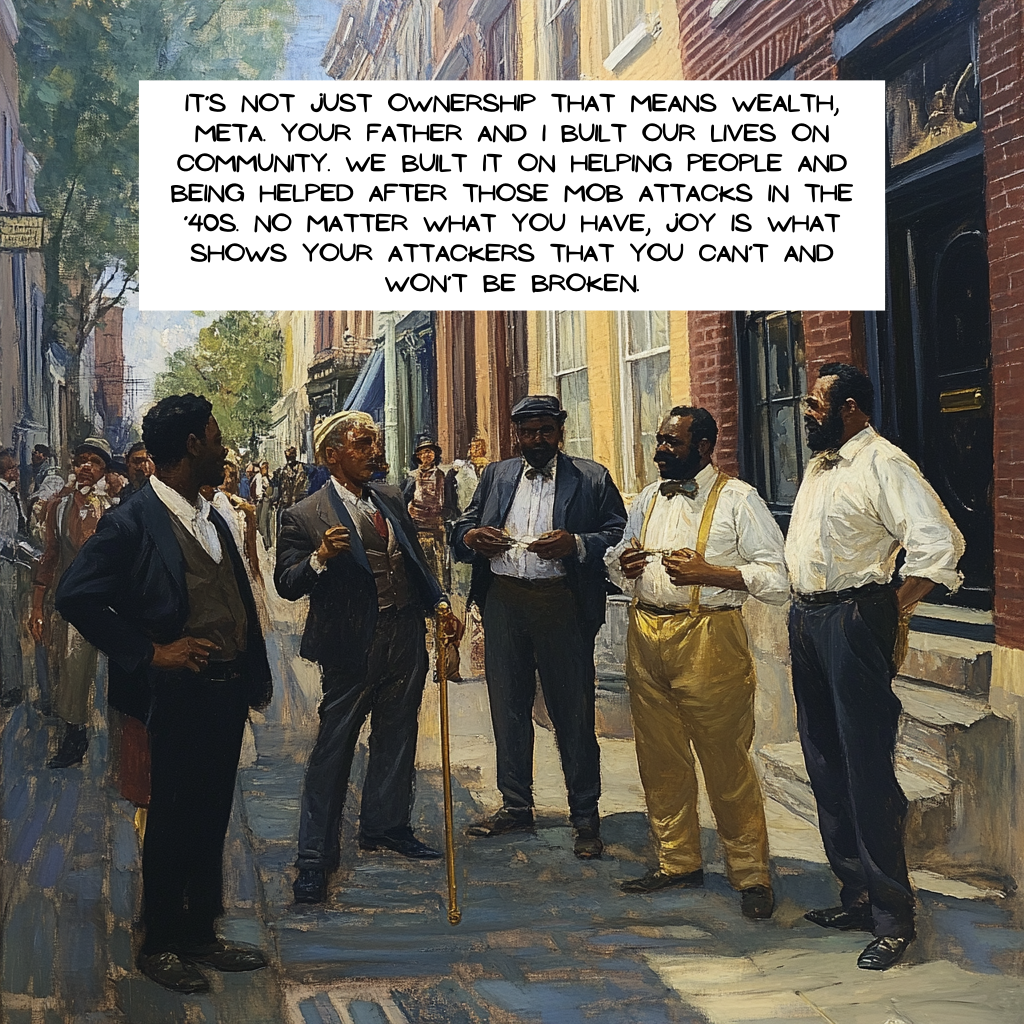
Citations
Burkhart, Emily. “Shaping Perceptions: Meta Vaux Warrick Fuller, Sculptor.” Ramblings of a Restless Mind (blog), March 22, 2023. https://www.ramblingsofarestlessmind.com/post/shaping-perceptions-meta-vaux-warrick-fuller-sculptor.
Cobb, W. Montague. “Henry McKee Minton, 1870-1946.” Journal of the National Medical Association 47, no. 4 (July 1955): 285–86.
First Lutheran Church. 1838 Census. Vol. 3. 4 vols. Philadelphia, Pennsylvania: Pennsylvania Abolitionist Society, 1838.
Hay, Peter. “Deed from William Edwards to Henry Jones,” May 25, 1841. Microfilm. Philadelphia City Archives.
Hershberg, Theodore. “A Tale of Three Cities: Blacks and Immigrants in Philadelphia: 1850-1880, 1930 and 1970.” Annals of the American Academy of Political and Social Science 441 (January 1979). https://www.proquest.com/news/docview/56134162/313AAD9B96714FF8PQ/1?accountid=14434&sourcetype=Scholarly%20Journals.
Hershberg, Theodore. “Philadelphia Social History Project: Pennsylvania Abolition Society and Society of Friends Manuscript Census Schedules, 1838, 1847, 1856.” Swarthmore College: ICPSR - Interuniversity Consortium for Political and Social Research, 2009. https://doi.org/10.3886/ICPSR03805.V1.
Kerr, Judith Nina. “God-Given Work: The Life and Times of Sculptor Meta Vaux Warrick Fuller, 1877-1968.” Ph.D., University of Massachusetts Amherst. Accessed September 3, 2024. https://www.proquest.com/docview/303481249/abstract/66B1F142BC6541D9PQ/1.
Liberator (1831-1865). “The Colored People of Philadelphia.” Boston. September 21, 1860.
McElroy, A. “Philadelphia City Directory.” E.C. & J. Biddle & Co., 1839-1867. https://www.philageohistory.org/rdic-images/index2.cfm?w=IA%2Emcelroysphiladel1860amce.
Pilgrim, Danya M. “Masters of a Craft: Philadelphia’s Black Public Waiters, 1820–50.” The Pennsylvania Magazine of History and Biography. Historical Society of Pennsylvania, 2018. https://doi.org/10.1353/pmh.2018.0030.

